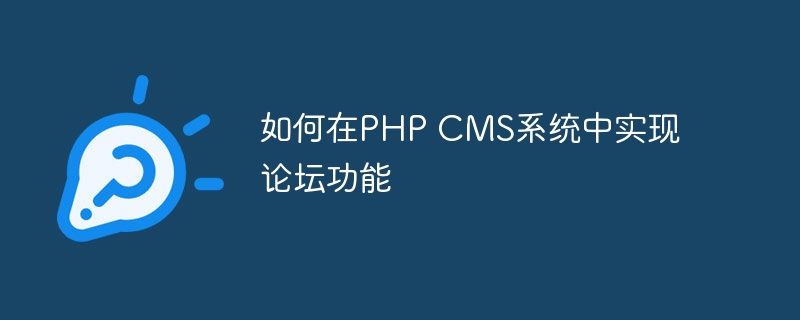

With the development of the Internet, the demand for community discussions is also getting higher and higher. If you are developing a PHP CMS system, you may be faced with the problem of how to implement a complete forum system. The forum is not only an important social media channel, but also an important way to understand your users and obtain their needs. This article will introduce you how to implement a forum system in a PHP CMS system.
Database Design
First, you need to design a database to store your posts, replies, users and other necessary information. Relational database management systems such as MySQL and PostgreSQL can be used. Next, create a database and corresponding tables to store the forum's information. The following is a sample database schema:
users (user table)
categories (section table)
topics (topic table)
replies (reply table )
Your forum homepage should list all sections and allow users to select the sections they are interested in. Each section should have a page that displays all the topics in that section. Also add a "Create Topic" button on the homepage and each section page so that users can post new topics.
On the topic page, you need to display the title, content, and creator of the topic, as well as all replies. The page should also have a "Reply" button that allows users to reply to a specific thread.
Before users can register, you need to add a login link to the page. After the user is logged in, you need to change the navigation of your page to add a user logout link and display the user's name or avatar.
So, in your CMS, you need to implement permission control. Generally speaking, you can add a "role_id" field to the user table, where each user has a role ID corresponding to it. For example, 0 might mean that the user is a regular user, and 1 means that the user is an administrator.
In the code, you need to implement permission control for different functions separately.
Summary
Implementing forum functionality in a PHP CMS system requires a lot of thought and effort. By fully considering the forum's database design, front-end design, permission design, and security, you can build an excellent forum system that provides a better communication and social experience.
The above is the detailed content of How to implement forum function in PHP CMS system. For more information, please follow other related articles on the PHP Chinese website!